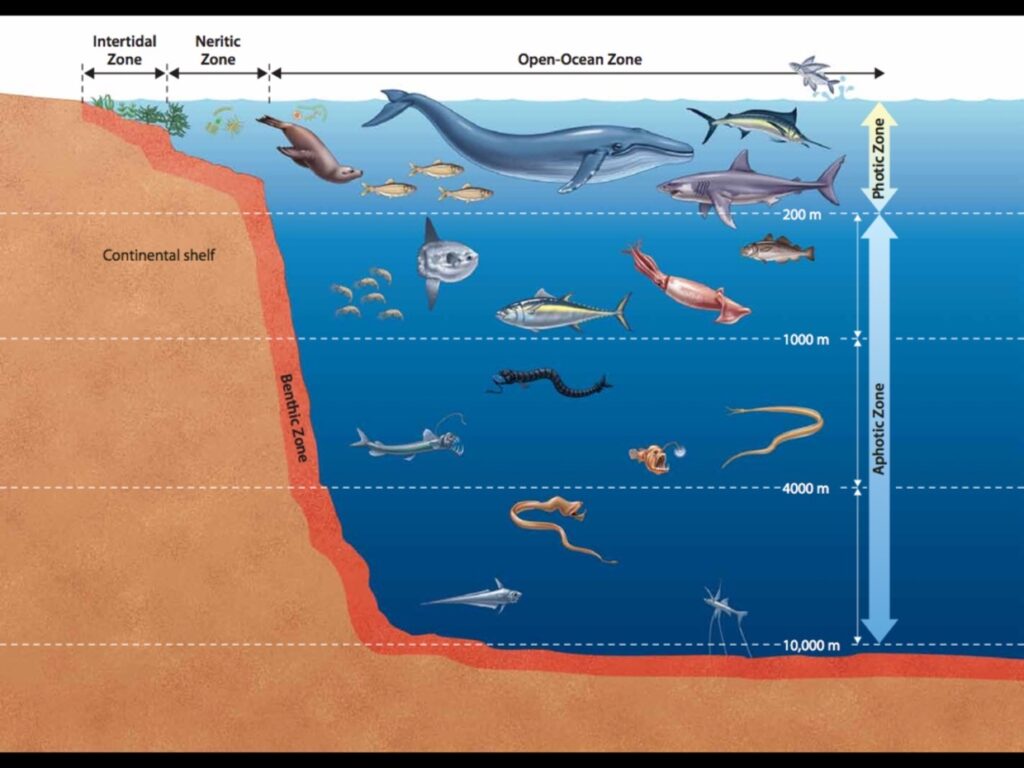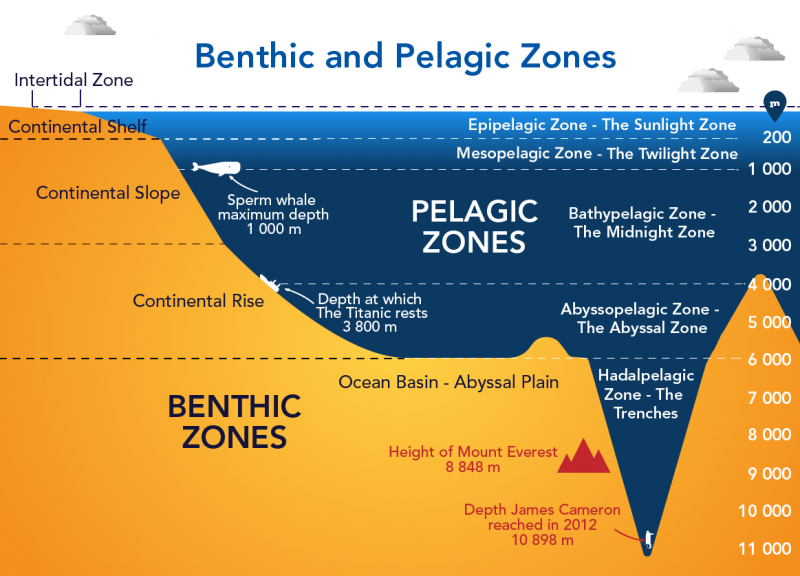Oceanographers usually divide ocean waters into separate layers, called zones, from the surface all the way to the seafloor. Zones are based on the amount of sunlight that can penetrate the water’s layers and have appropriate names: the sunlight zone, the twilight zone, and the midnight zone. We know most about the upper layers of the ocean, because that’s where humans are most able to explore. Those layers are also where most sea life can be found.
The Ocean’s Layers
The Sunlight Zone is also called the euphotic zone. Euphotic means “good light.” Th is is the top layer of the ocean. Th e sunlight zone stretches from the surface of the water to a depth of about 656 feet (200 meters). It is called the sunlight zone because it is the layer that gets the most sunlight, and it has by far the most sea life. Th e sunlight zone is also the warmest zone of the ocean, since it is heated by the sun. Life in this zone ranges from the tiniest phytoplankton, which are microscopic plants, to the enormous whale shark, the biggest fish in the oceans.
Th e top layer of the ocean is the narrowest layer, but it is the most crowded with life. Why? Because most life in the ocean begins with plants, and plants need the sun to live. Millions of species of plants, animals, and fish live in the sunlight zone. Some species can live in many different environments within this zone. Large fish, like sharks, can live near shallow reefs or hunt in the open ocean.
Whales migrate for thousands of miles each year between nesting grounds and feeding grounds where they spend the rest of the year. Then there are some species of fish that will spend their entire lives within a few feet of where they were born. Life in the sunlight zone is dangerous—lots of life also means lots of predators.
Many fish and other sea creatures in the sunlight zone have a special adaptation called countershading to trick predators. They are darker on top of their bodies and lighter underneath. When predators are above them, the fish blend in with the darker water below. When predators are below them, the fish blend in with the lighter water above. Pretty tricky!
The Twilight Zone is the layer underneath the sunlight zone. Th is layer is also called the dysphotic zone. Dysphotic means “deficient light.” Sunlight doesn’t reach very deeply into this zone, which is at a depth of between 656 and 3,281 feet (200 to 1,000 meters).
words to known
seafloor: the bottom of the sea or ocean.
sunlight zone: the top layer of the ocean.
phytoplankton: a type of plankton that gets its energy from the sun through photosynthesis.
adaptation: changes an animal or plant makes (or has made) in response to its environment.
twilight zone: the layer below the sunlight zone that has no light at its bottom.
Vescovo’s trip to the Challenger Deep, at the southern end of the Pacific Ocean’s Mariana Trench, back in May, was said to be the deepest manned sea dive ever recorded, at 10,927 meters (35,853 feet).
According to numerous studies consulted by Forbes, the oceans hold around 20 million tons of gold. That would mean that the value of the massive underwater treasure – if we take into consideration that in August 2021 one gram of gold is quoted at $ 57.39 – would be 1,147 trillion dollars. Such a huge number!



